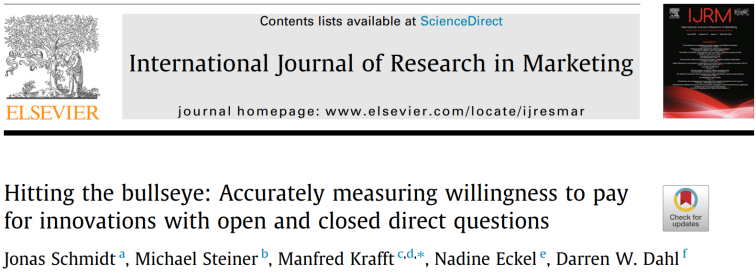New IJRM Publication of the Chair of Marketing Management - Now Available in Print

Knowledge of a customer's willingness to pay (WTP) at early stages of product development is key to the success of innovations. However, since innovative products do not exist yet, only the hypothetical WTP can be surveyed, inducing a measurement bias. Unfortunately, little is known about the factors that induce this bias and how it differs depending on the method utilized in measuring WTP.
A recent publication in the International Journal of Research in Marketing, co-authored by Manfred Krafft, Nadine Eckel, and former Chair of Marketing Management team member Jonas Schmidt, addresses this gap.
The authors focus on direct methods to survey hypothetical WTP. Based on anchoring theory and the corresponding psychological mechanisms for open questions as well as closed questions, they conducted two experiments, each comprised of a survey and a field study. The experiments differ regarding the product category and the product's degree of innovativeness.
The results show that open questions are less accurate in estimating real WTP than closed questions. Further, their research offers insights into moderating factors that influence the efficacy of open and closed questions. For example, for customers with a very high product category knowledge, open questions are applicable, while closed questions result in higher accuracy when accounting for the customers' cognitive abilities.

